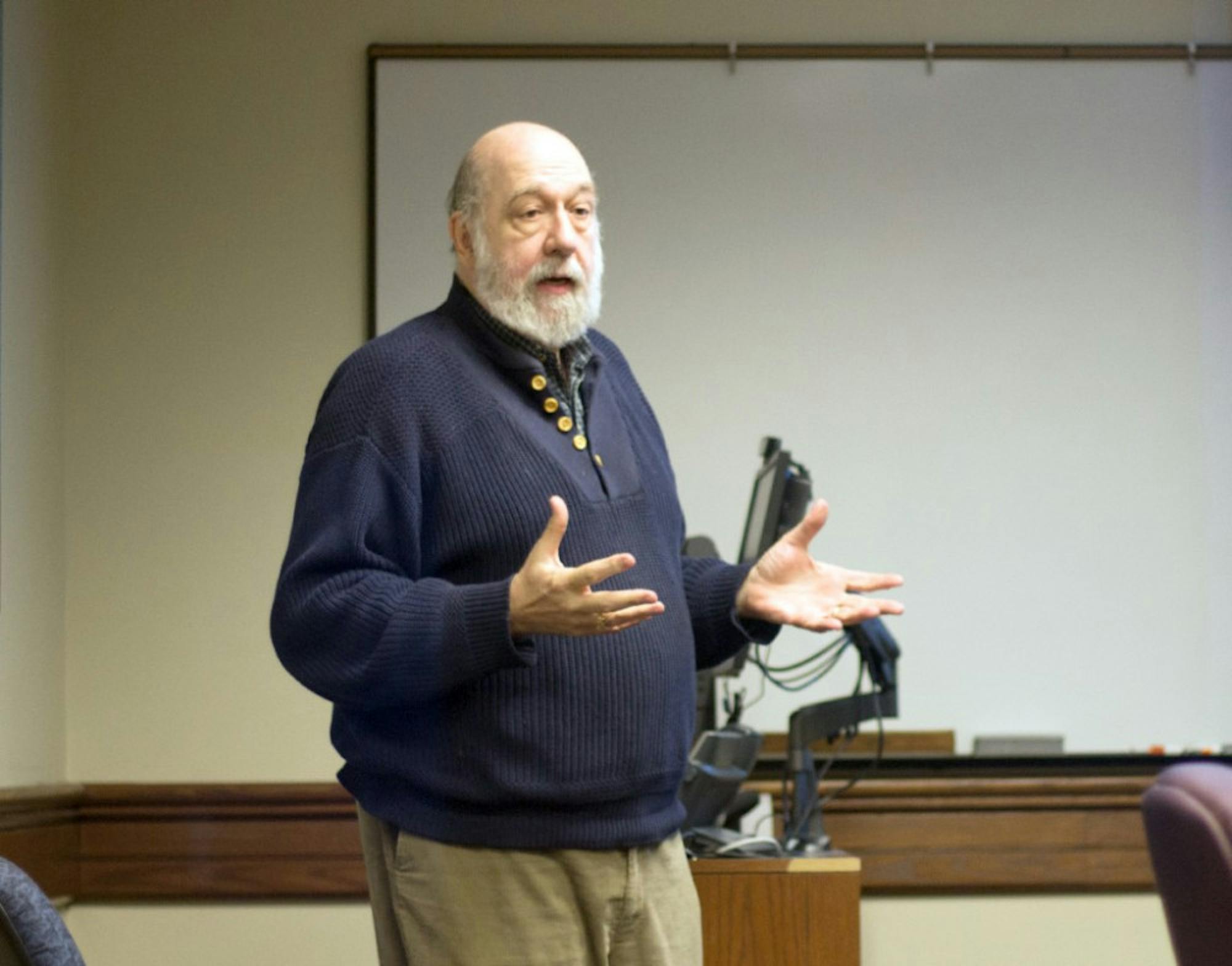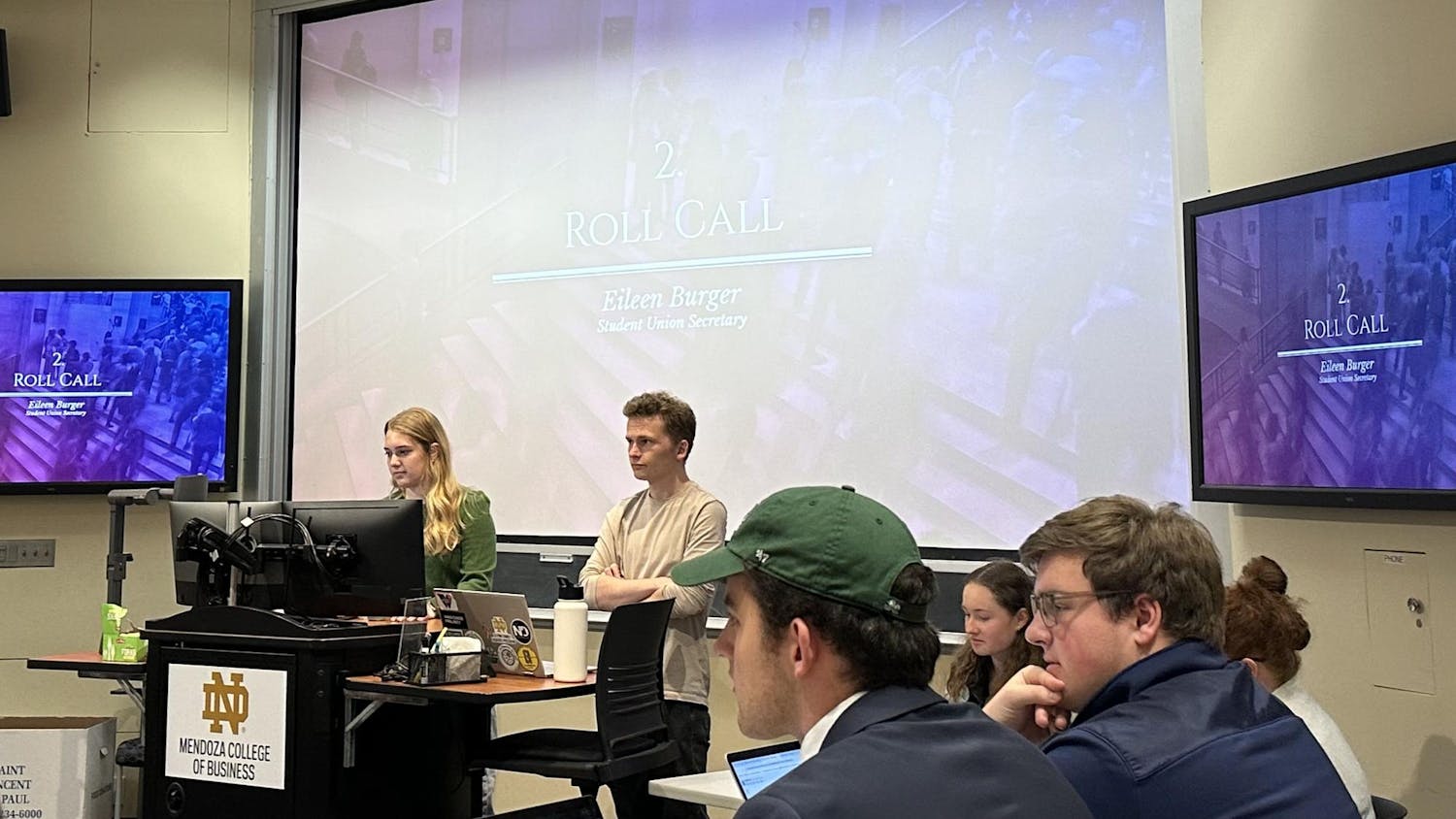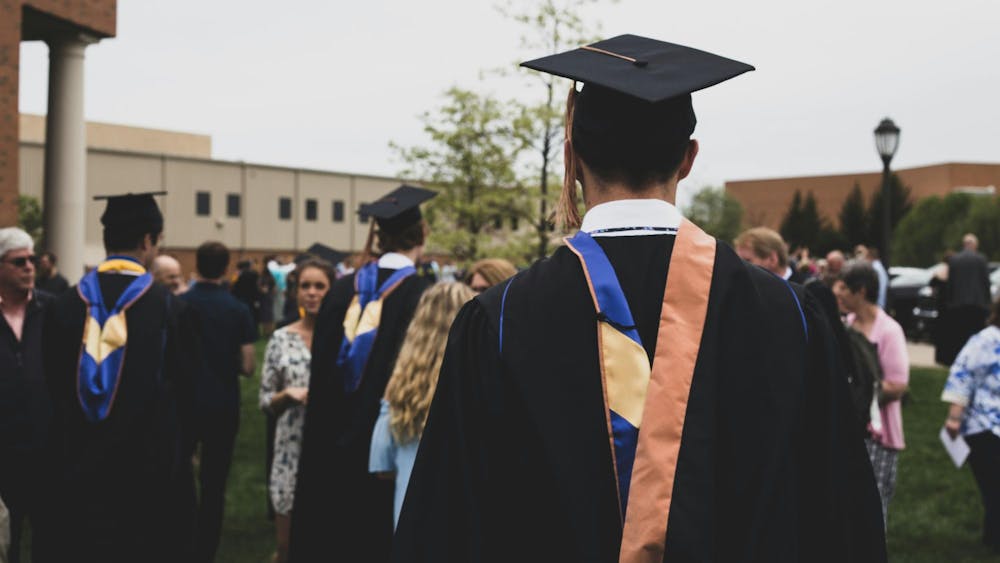How do we understand the relationship between technology, ecology and the Renaissance? What does it mean to move away from an age of industry to an age of Renaissance ideals? Matthew Kubik, associate professor of construction engineering at Indiana University-Purdue University Fort Wayne, examined these questions in his colloquium Tuesday on the Renaissance ideal titled “Living the Renaissance Ideal as a Person of Faith in the 21st Century.”
The colloquium was part of the Renaissance Circle, a set of monthly informal workshops for first-year students that connect different ideas in the arts, humanities and sciences.

Michael Yu | The Observer
Michael Yu | The Observer
“In the Renaissance there was none of that division between these professions, and so there was a quest for all knowledge," Kubick said. “We have a crossing of ideas and culture as we have a progression of ideas over time.”
According to Kubik, the 21st century can currently be classified as being in the “mechanical” or industrial age. Kubik said the ideal of the mechanical age equates progress with growth and cultural values are connected to “the amassing of greater and greater material good.”
“We look at what grows and what thrives to discover the embedded values within our culture,” Kubik said.
Kubik said this set of values has also discouraged us from understanding our connection to future generations and contributes to our devaluation of human labor. He said this ideal is currently at odds with our current resources as we experience a rapid decline in oil and natural gas reserves. As we continue to avoid facing our current ecological condition, we are “buying time,” Kubik said.
The current generation will transition from the mechanical age to the green age, which is similar to the Renaissance age in the way it sees the overlapping relationship between human and earth, Kubik said. He said the transition to this age requires an understanding of how the laws of thermodynamics and concepts of energy define our relationship to the earth, and it will be important to “consider what the environmental burdens are going to be with supply, manufacture, use and disposal.”
“We’re redefining the concept of progress if the actions we’re taking serve to ensure that the earth is able to sustain itself and its inhabitants and sustain our future children,” Kubik said.
According to Kubik, the Catholic faith, specifically the Christian emphasis on loving one's neighbor, held an ideological connection to the ideals of the green age of synergy and emphasized the interconnected nature of humanity. Kubik said while the mandate to "love one another" is common in other religions, Christianity is unique in emphasizing how loving that meant recognizing the interconnections they shared with one another and with the earth.
“Love your neighbor as yourself, meaning you and your neighbor are the same thing," Kubik said. "We are connected through all those interconnections, the same DNA, the same chemicals, the same connection to the earth and we extend that to 'love the earth as yourself' because we are part and parcel of all connected material in existence.”













